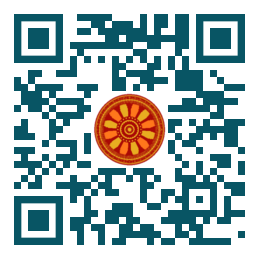
:: International Transaction Journal of Engineering, Management, & Applied Sciences & Technologies
http://TuEngr.com

ISSN 2228-9860
eISSN 1906-9642
CODEN: ITJEA8
FEATURE PEER-REVIEWED ARTICLE
Vol.15(4)(2024) |
A Study on Spiral Organization of Space Syntax in Shanghai Natural History Museum
 Zal Hazmi Norsabaruddin (School of Housing, Building and Planning, Universiti Sains Malaysia, MALAYSIA),
Zal Hazmi Norsabaruddin (School of Housing, Building and Planning, Universiti Sains Malaysia, MALAYSIA),
Yasser Arab (Department of Architectural Engineering, Dhofar University, Salalah, SULTANATE of OMAN),
Ahmad Sanusi Hassan (School of Housing, Building and Planning, Universiti Sains Malaysia, MALAYSIA),
Kritsada Anantakarn (Division of Civil Engineering and Construction Management, Faculty of Engineering and Architecture, Rajamangala University of Technology Tawan-ok, Uthenthawai Campus, THAILAND),
Koltouch Anantakarn (Department of Civil Engineering, Thammasat School of Engineering, Thammasat University, THAILAND).
Discipline: Architectural Engineering.
DOI: 10.14456/ITJEMAST.2024.20
Keywords: Movement in space; Building circulation; Museum experience; Space syntax; SNHM; Wayfinding; Biomimicry; Building's spatial configuration; Permeability.
AbstractSpace syntax is a set of techniques to analyse the spatial layouts and users' activity patterns in a building. This paper evaluates a study on the building typology of a museum or public institution. The main objective of this paper is to identify the permeability and wayfinding of the spatial structures of the selected museum, which influences the way users utilise the spatial organisation. The chosen case study is the Shanghai Natural History Museum (SNHM). This study uses the existing layout plans to observe the museum spaces. The study also explores the wayfinding and the level of permeability of the museum using the justified graph as the measurable tool. The result demonstrates that the overall building spaces have a straightforward and complex spatial configuration with balanced public and private spaces of the selected floor plans. Furthermore, the layout spaces interpret the level of wayfinding of each area has a good separation of accessibility. This study illustrates that space syntax is a practical tool for architects to comprehend the function of the spaces since it visualises the building's spatial configurations and quantifies the main building typology trait.Paper ID: 15A4A
Cite this article:
Norsabaruddin, Z. H., Arab, Y., Sanusi, A. H., Anantakarn, K., and Anantakarn, K. (2024). A Study on Spiral Organization of Space Syntax in Shanghai Natural History Museum. International Transaction Journal of Engineering, Management, & Applied Sciences & Technologies, 15(4), 15A4A, 1-13. http://TUENGR.COM/V15/15A4A.pdf DOI: 10.14456/ITJEMAST.2024.20
References
- Aguilar, C. (2021). Shanghai Natural History Museum/ Perkins+Will. ArchDaily. https://www.archdaily.com/623197/shanghai-natural-history-museum-perkins-will
- Albaum, G. (1997). The Likert scale revisited. Market Research Society. Journal, 39(2), 1-21.
- Bafna, S. (2003). Space syntax: A brief introduction to its logic and analytical techniques. Environment and behavior, 35(1), 17-29.
- Blitz, M. (2015). The New Shanghai Natural History Museum is Ancient, Modern and Uniquely Chinese. Smithsonian Magazine. https://www.smithsonianmag.com/travel/shanghai-natural-history-museum-and-new-age-museums-180955392
- Dursun, P. (2007). Space syntax in architectural design. In 6th international space syntax symposium (pp. 01-56).
- Elottol, R. M., & Bahauddin, A. (2011). A Competitive Study on the Interior Environment and the Interior Circulation Design of Malaysian Museums and Elderly Satisfaction. Journal of Sustainable Development, 4(3), 223.
- Halim, N. F. A., Hassan, A. S., Arab, Y., & Angood, R. S. A. B. (2019). Ocean Conservation and Waste Prevention Centre: The Study of Space Syntax in Recycling Facility.
- Hillier, B., & Tzortzi, K. (2006). Space syntax: the language of museum space. A companion to museum studies, 282-301.
- Maglic, M. J. (2012). Biomimicry: using nature as a model for design.
- Natapov, A., Kuliga, S., Dalton, R. C., & H?lscher, C. (2015). Building circulation typology and space syntax predictive measures. In Proceedings of the 10th International Space Syntax Symposium (pp. 13-17). London: Space Syntax Laboratory, The Bartlett School of Architecture, University College London.
- Natapov, A., Kuliga, S., Dalton, R. C., & H?lscher, C. (2020). Linking building-circulation typology and wayfinding: design, spatial analysis, and anticipated wayfinding difficulty of circulation types. Architectural Science Review, 63(1), 34-46.
- Obeidat, B., & Rashid, M. (2017). Using Space Syntax Approach to Assess Signs' Locations for Improving Wayfinding in an Educational Setting.
- Ong, P.Y., Arab, Y., Hassan, A. S., Saeed, M., Onubi, H. O., and Witchayangkoon, B. (2024). Analysis of Permeability & Wayfinding Using Space Syntax Theory in Public Aquarium: Case Study on Antalya Aquarium in Turkey. International Transaction Journal of Engineering, Management, & Applied Sciences & Technologies, 15(1), 15A1E, 1-15. http://TUENGR.COM/V15/15A1E.pdf DOI: 10.15456/ITJEMAST.2024.5
- Ricci, P. (2016). Shanghai Natural History Museum, the green building icon. Alchimag. https://alchimag.net/en/architecture/green-building-architecture/shanghai-natural-history-museum-the-green-building-icon
- Sarzali, S.A., Arab, Y., Onubi, H. O., Hassan, A.S., Wichayangkoon, B. and Saeed, M. (2024). Analysis of Users' Level of Permeability and Wayfinding in Museum Hotel Building Typology. International Transaction Journal of Engineering, Management, & Applied Sciences & Technologies, 15(1), 15A2B, 1-12. http://TUENGR.COM/V15/15A2B.pdf DOI: 10.14456/ITJEMAST.2024.8
- Wineman, J. D., & Peponis, J. (2010). Constructing Spatial Meaning: Spatial Affordances in Museum Design. Environment and Behavior, 42(1), 86-109.
Other issues:
Vol.15(3)(2024)
Vol.15(2)(2024)
Archives
Call-for-Papers
Call-for-Scientific PapersCall-for-Research Papers: ITJEMAST invites you to submit high quality papers for full peer-review and possible publication in areas pertaining engineering, science, management and technology, especially interdisciplinary/cross-disciplinary/multidisciplinary subjects.
To publish your work in the next available issue, your manuscripts together with copyright transfer document signed by all authors can be submitted via email to Editor @ TuEngr.com (please see all detail from Instructions for Authors)
Publication and peer-reviewed process:
After the peer-review process, articles will be on-line published in the available next issue. However, the International Transaction Journal of Engineering, Management, & Applied Sciences & Technologies cannot guarantee the exact publication time as the process may take longer time, subject to peer-review approval and adjustment of the submitted articles.